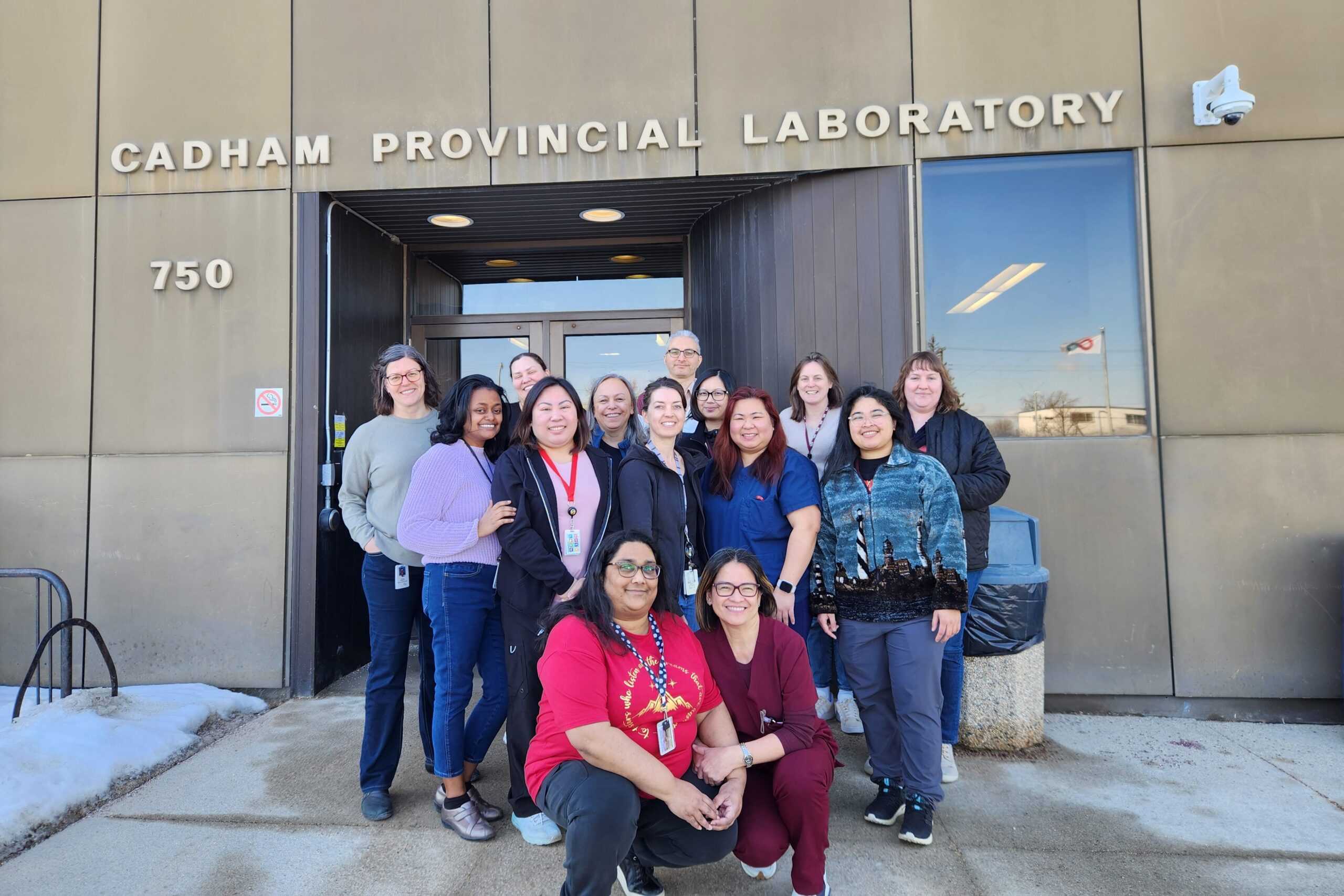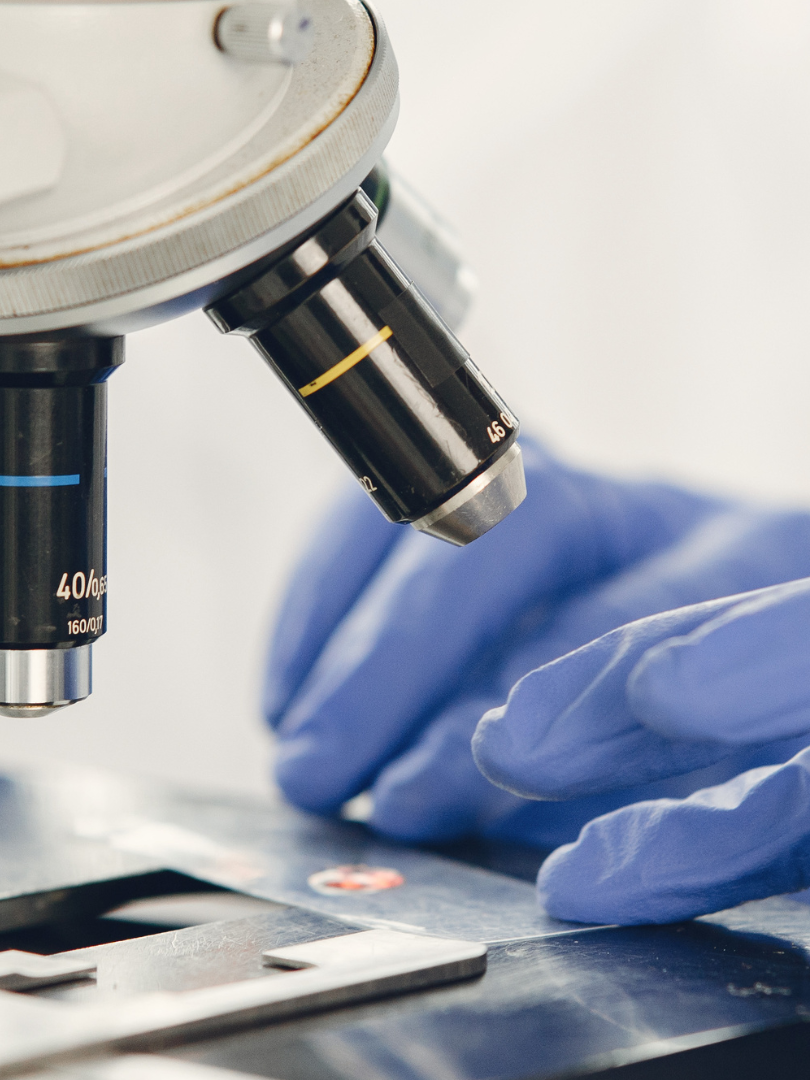Janna H., BSc, is a Supervisor – Technical Specialist and Medical Laboratory Technologist (MLT) at Cadham Provincial Laboratory (CPL). She has been an MLT for 14 years, spending 13 of those at CPL.
Janna works alongside a team of 11 MLTs, six Medical Laboratory Assistants (MLAs) and two Scientists in the Virus Detection Department, performing virus surveillance and detection for the province of Manitoba.
“It’s critical for health-care teams to have access to accurate test results to properly treat patients. I love knowing that my work has a direct impact on patients.”
So, what does that look like?
The virus detection team sorts and assesses patient samples from across the province, using clinical and collection information to determine which tests are necessary. From there, the sample is processed for testing. For example, testing for Epstein-Barr Virus would mean performing a PCR test for detection, then reporting the results directly to the ordering physician.
The work doesn’t stop there. The department also cultures viruses and examines them for cytopathogenic effects (CPE). When viruses like Influenza A are grown in culture, they’re sent to the National Microbiology Laboratory for surveillance – vital information that helps determine the makeup of vaccines each year.

What makes CPL unique is the sheer scope of testing. The lab, which employs approximately 120 MAHCP members, performs hundreds of different tests province-wide:
- Chemistry – Maternal Serum Screening, Newborn Metabolic and Endocrine Screening
- Serology/Parasitology – Viral loads, prenatal screening, organ donor screening, and parasite testing
- Microbiology – Foodborne illness, STIs, and antibiotic-resistant organisms
- Virus Detection – Respiratory, STI, and enteric viruses, as well as vaccine-preventable outbreaks and donor testing
While Janna says she’s always wanted to work in health care and help patients, she took a special interest in the lab thanks to shows like House and CSI.
“I was curious about how the science worked. I always gravitate towards learning more about infectious diseases, and I’m fascinated by epidemiology. The lab is constantly advancing in technology, so the work is never boring.”
Challenges for medical lab professionals.
The pressure to do more with less takes a toll – especially when there’s no sign of relief or systemic change.
Like many allied health professionals working in Manitoba’s healthcare system, MAHCP members who work in medical laboratories are feeling the impact of chronic understaffing and burnout. The pressure to do more with less takes a toll – especially when there’s no sign of relief or systemic change.
“There’s always too much work and never enough staff,” Janna says. “I feel like when I leave work every day, there are hours of work I didn’t get done.”
Despite these challenges, Janna has found strength in solidarity by getting involved with MAHCP. She says that stepping up to be a member of the Central Table Bargaining Committee has helped ensure her team’s concerns are heard.
“Being on the bargaining committee this round felt like I was making a positive impact – not only for the ~120 MAHCP members at Cadham, but also for the rest of our 7,000 members. I’m proud that we made changes, big and small, to support allied health.”
When she’s not busy with work or union bargaining, Janna enjoys gardening, baking, and staying active with weightlifting and biking. Above all, she loves playing Lego with her six-year-old, Owen.


